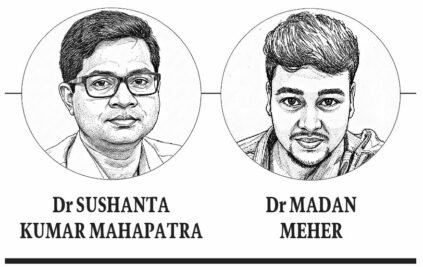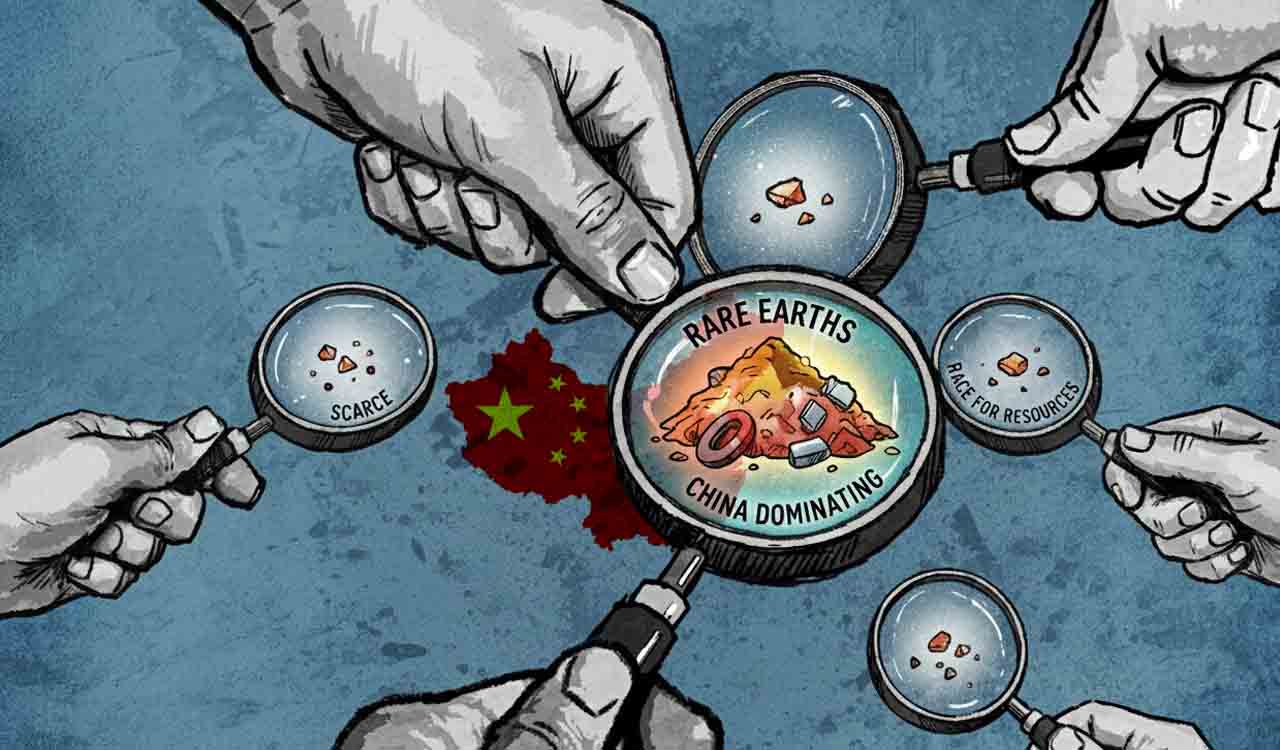Opinion: Sustaining growth, by design — What the 2025 Nobel in Economics teaches India
The Nobel-winning work of Mokyr, Aghion and Howitt carries a warning for India — unchecked monopoly power, restricted inquiry, or rising inequality could bring back stagnation

By Dr Sushanta Kumar Mahapatra, Dr Madan Meher
The 2025 SverigesRiksbank Prize in Economic Sciences has been awarded to Joel Mokyr, Philippe Aghion, and Peter Howitt “for having explained innovation-driven economic growth.” Mokyr is recognised “for identifying the prerequisites for sustained growth through technological progress,” while Aghion and Howitt share the other half “for the theory of sustained growth through creative destruction.”
Also Read
Their work shows how innovation, supported by institutions, transforms stagnation into self-perpetuating growth. But progress is neither automatic nor costless: it requires knowledge accumulation, capable implementers, social acceptance of disruption, and policies that ensure creative destruction benefits society.
Why this Prize Matters
This year’s award unites two perspectives that complete one another. Mokyr, the economic historian at Northwestern University, shows how the Enlightenment — and what he calls the “Industrial Enlightenment”— forged a feedback loop between propositional knowledge (scientific understanding of why things work) and prescriptive knowledge (practical know-how of how to make them work). Before that intellectual shift, innovations were isolated bursts: artisans knew how, but rarely why. Once science and craftsmanship began to interact, discovery became cumulative rather than episodic.
Aghion and Howitt, in contrast, supplied the analytical engine. Their seminal 1992 model of creative destruction formalised how firm-level innovation and competition can yield steady growth through a constant churning of ideas. Each new product or process boosts productivity but displaces incumbents, creating winners and losers—and demanding policies that manage these social costs without stifling the dynamism that drives progress.
The Twin Conditions
Two lessons run through the Academy’s scientific background. First, knowledge must exist in twin forms. Propositional knowledge provides explanation and predictability; prescriptive knowledge provides execution and diffusion. When the two connect through universities, workshops, and open exchange, the cycle of innovation becomes self-reinforcing. The Industrial Revolution’s enduring take-off occurred precisely when this coupling matured.
India’s digital economy is increasingly dominated by a few platforms, reducing room for experimentation while weak links between universities and industry limit innovation
Second, innovation is disruptive by design. The laureates show that economies need institutions that can absorb and reallocate the losses creative destruction inflicts. When dominant interests — be they guilds of the 18th century or digital monopolies of today — block new entrants to protect themselves, progress slows. Thus, sustaining innovation requires social trust, compensatory mechanisms, and political frameworks that allow change while cushioning those displaced by it.
Policy Warnings for India
The Royal Swedish Academy cautions that sustained growth can never be taken for granted. Stagnation is humanity’s historical norm; the modern era is the anomaly. Threats to the current growth regime include rising market concentration, barriers to open science, eroding social mobility, and political capture by incumbents.
For India, these are not abstract concerns. The digital economy is increasingly dominated by a few platforms, reducing room for experimentation and new entrants. The country’s research ecosystem still suffers from weak translation between universities and industry, meaning scientific ideas rarely reach commercial or social application. At the same time, labour-market rigidity and limited social insurance mean that disruption—essential for innovation—often exacts a human toll that provokes resistance to reform. Without deliberate policies to manage these frictions, the virtuous cycle of innovation could easily stall.
Concrete Indian Imperatives
• Reinvigorate the science-practice pipeline: Fund translational research linking labs to workshops and startups, expand technical apprenticeships, and reward universities for converting theory into usable technology. Productivity follows when propositional knowledge meets prescriptive application.
• Tackle concentration where it matters: Competition policy should prevent monopolies without discouraging R&D investment. Both excessive and insufficient concentration can stifle innovation.
• Build robust worker-transition systems: Labour policy should “protect people, not jobs,” using active labour-market programmes, portable benefits, and reskilling to make creative destruction socially sustainable. Economies with high churn and strong safety nets grow faster than those with frozen job structures.
• Safeguard open science and pluralism: India must protect academic freedom, open access, and international collaboration. Societies prosper when new ideas circulate freely, as diffusion depends more on openness than on top-down control.
AI, Sustainability, and Equity
The Academy notes that artificial intelligence could strengthen the feedback between scientific and practical knowledge, turning theory into application faster than ever. Yet, this promise will hold only if access is broad and governance curbs the dominance of a few data-rich monopolies. Policy will determine whether AI fuels inclusive growth or widens inequality.
The laureates also stress that sustained growth is not necessarily sustainable. Technological progress can solve environmental problems, but also generate new ones — from climate change to resource depletion. Innovation becomes self-correcting only under wise regulation and international cooperation. For India, the task is to channel its inventive energy toward green technologies, circular production, and equitable gains.
Roadmap for Next Century
The 2025 Economics Nobel honours more than theory; it celebrates a vision of how science, enterprise, and institutions keep progress alive. For India — a vast, youthful and rapidly digitising economy — the message is urgent: invest in basic science, link research with practice, preserve competition and openness, and build safety nets that make technological disruption socially bearable.
If these foundations weaken — through monopoly power, constrained inquiry or rising inequality — the centuries-long norm of stagnation could return. The laureates’ warning is clear: growth must be sustained by design, not taken for granted. It is a collective choice that depends on knowledge, openness to change, and trust in the institutions that nurture both.

(Dr Sushanta Kumar Mahapatra is with Department of Economics, ICFAI School of Social Sciences,ICFAI Foundation for Higher Education (IFHE), Deemed University, Hyderabad. Dr Madan Meher is a former Senior Research Fellow (UGC), School of Economics, Gangadhar Meher University, Sambalpur, Odisha)
Related News
-
Hyderabad: Skywalk construction leads to traffic diversions in Mehdipatnam
8 mins ago -
Traffic restrictions in Cyberabad during President Murmu’s visit
18 mins ago -
GP elections cause fissures in CPI-Congress alliance in Telangana
18 mins ago -
Salary delays hit TWREIS staff after shift to IFMIS system
23 mins ago -
Random YouTube livestream mysteriously appears on White House website
41 mins ago -
HMDA may lose its revenue as ULBs merge with GHMC
58 mins ago -
Shilparamam hosts All India Crafts Mela from December 20
1 hour ago -
Teen allegedly kills man after being denied Rs 10 for liquor in Andhra
1 hour ago




